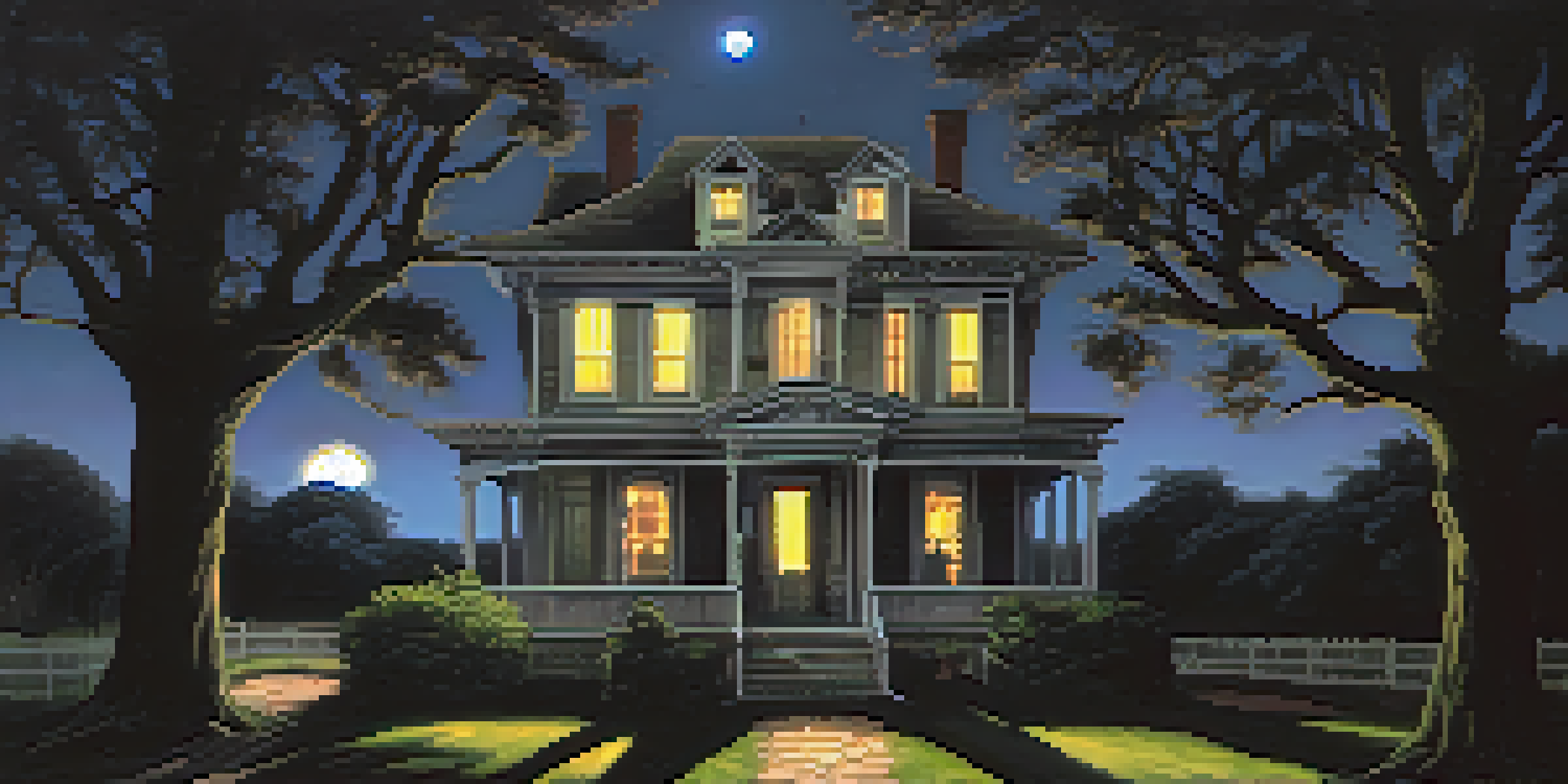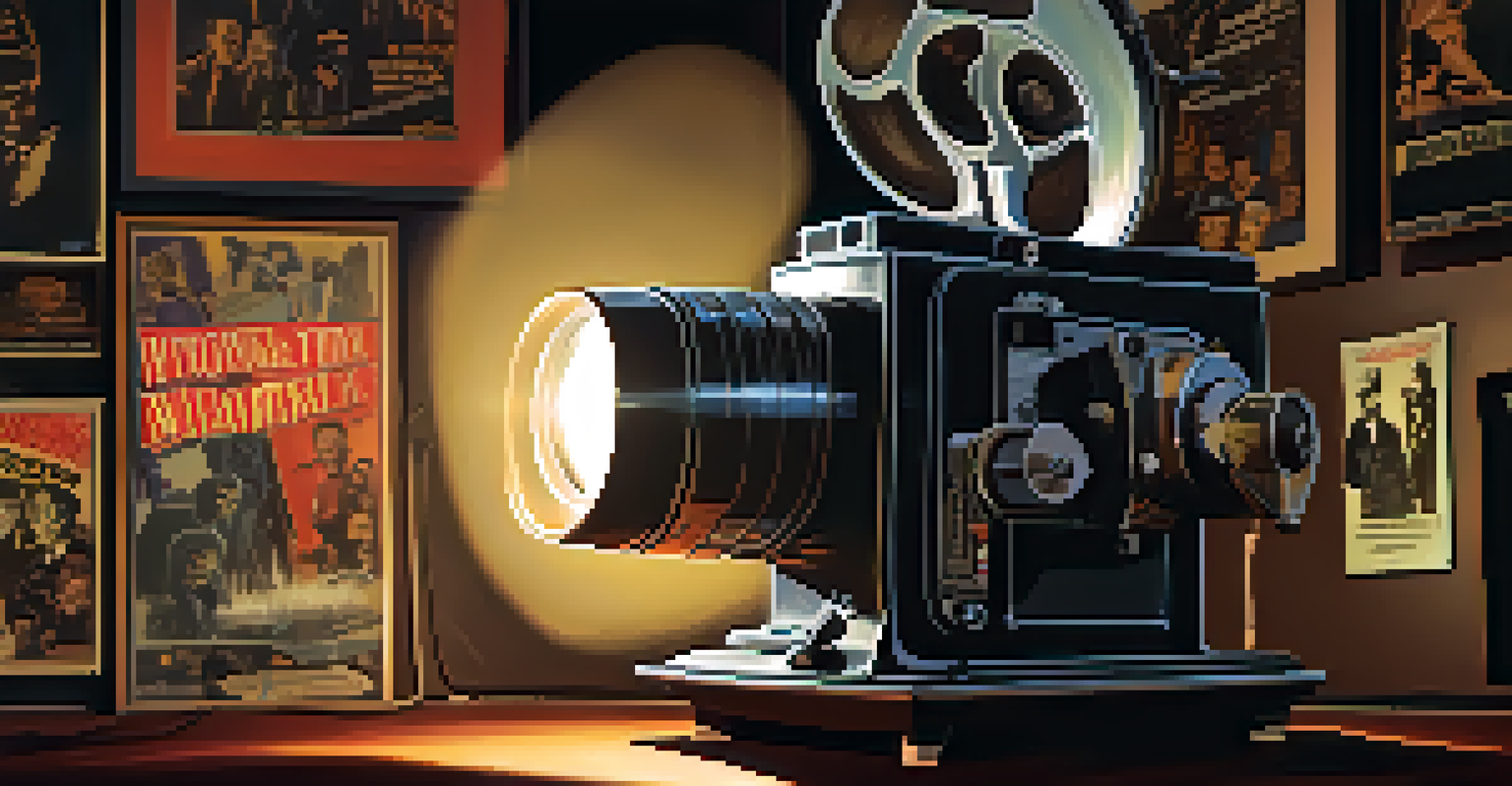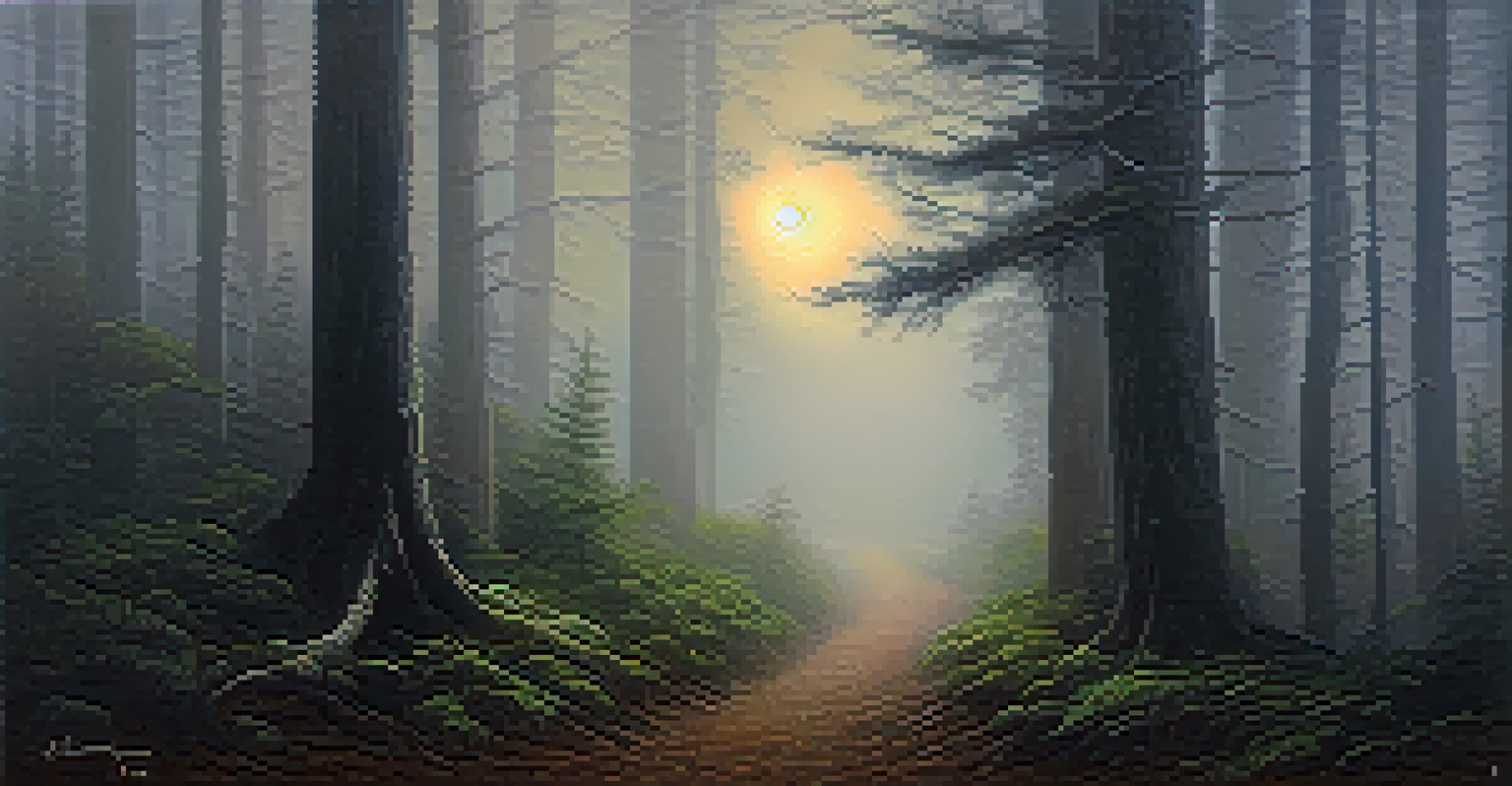Exploring Horror Films: Fear and the Human Psyche Connection

The Evolution of Horror Films and Their Impact on Culture
Horror films have evolved significantly since the silent film era, showcasing our ever-changing relationship with fear. From the classic monsters of the 1930s to the psychological thrillers of today, these films reflect societal anxieties and cultural norms. They serve as a mirror, often highlighting what unsettles us most in our daily lives.
We make up horrors to help us cope with the real ones.
In the 1960s and 70s, horror began to embrace more graphic and shocking elements, paving the way for slasher films and supernatural thrillers. This shift not only entertained but also provoked discussions about morality, violence, and the human condition. Today’s horror films continue to challenge viewers, often addressing complex themes like mental health and societal issues.
Ultimately, horror films are more than just entertainment; they are a cultural commentary that resonates with audiences. Each era's films encapsulate the zeitgeist, offering insights into what scares us as a society. As we explore these narratives, we uncover the intricate connections between fear and our collective psyche.
The Psychological Appeal of Horror: Why Do We Watch?
Many people wonder why we willingly expose ourselves to fear through horror films. The answer lies in the psychological thrill that comes from experiencing fear in a controlled environment. Watching horror allows us to confront our fears safely, allowing for a cathartic release without real-world consequences.

Moreover, horror films often trigger the release of adrenaline, enhancing the viewing experience. This physiological response can lead to feelings of excitement and exhilaration, akin to riding a roller coaster. It’s this mix of fear and thrill that keeps viewers coming back for more, seeking that rush over and over again.
Horror Films Reflect Cultural Fears
Horror films serve as a mirror to society, highlighting our anxieties and cultural norms through various narratives.
Additionally, horror films can be a social experience, bringing friends and family together for a shared thrill. The communal reactions—screams and laughter—create a bond that enhances the enjoyment. This shared experience can even lead to discussions about personal fears and societal issues, making horror not just entertaining but also a form of social commentary.
Fear as a Universal Emotion: What It Reveals About Us
Fear is a universal emotion that transcends culture and geography, making horror films relatable to a wide audience. These films tap into fundamental human fears, such as the fear of death, isolation, and the unknown. By exploring these themes, horror films reveal deeper truths about our vulnerabilities and the human experience.
Horror is the only genre that lets you confront your fears in a safe environment.
For instance, the fear of the dark is a common thread in many horror narratives, symbolizing our fear of the unknown. This primal fear has been depicted in countless films, from ghost stories to psychological thrillers, illustrating how deeply ingrained these emotions are in our psyche. Through this lens, horror becomes a way to confront and understand our darkest thoughts.
Moreover, horror films often challenge societal norms, forcing viewers to confront their fears in a broader context. They encourage audiences to reflect on their own beliefs and prejudices, making the viewing experience both personal and universal. In this way, horror films can act as a catalyst for self-reflection and growth.
Iconic Horror Tropes and Their Psychological Significance
Horror films often rely on familiar tropes that evoke fear and tension, such as the 'final girl' or the 'haunted house.' These archetypes not only serve to heighten suspense but also reflect societal fears and cultural narratives. For instance, the final girl trope often symbolizes resilience and purity, showcasing the triumph of good over evil.
The haunted house, on the other hand, represents our fears of the past and the unknown, often tied to unresolved trauma or guilt. As characters explore these spaces, audiences are reminded of their own fears surrounding home and safety. These tropes resonate deeply, connecting viewers to their own lives and experiences.
Fear Provides Psychological Thrills
The thrill of horror films allows audiences to confront fears in a safe environment, leading to a cathartic release and excitement.
By analyzing these tropes, we can gain a deeper understanding of the themes that pervade horror films. Each cliché carries with it a wealth of psychological meaning, encouraging viewers to explore not only the narrative but also their own emotional landscapes. This connection is what makes horror such a compelling genre.
The Role of Sound and Music in Creating Fear
Sound and music are crucial elements in horror films that enhance the emotional impact of a scene. From the eerie silence before a jump scare to the unsettling score that builds tension, audio cues manipulate our fear responses. A well-timed sound effect can send chills down your spine, making the experience that much more immersive.
The use of dissonant chords and unexpected sounds can evoke feelings of discomfort and anxiety. For example, the iconic score of 'Psycho' has become synonymous with fear, showcasing how music can shape our reactions. By manipulating sound, filmmakers create an atmosphere that lingers long after the credits roll.
Moreover, the auditory experience in horror films often plays on our primal instincts. The human brain is wired to respond to sudden sounds, triggering our fight-or-flight response. This biological reaction is expertly exploited in horror, intensifying the fear and drawing viewers deeper into the narrative.
Cultural Reflections: Horror Films and Social Commentary
Horror films frequently serve as a medium for social commentary, reflecting the fears and issues of the time. From the Cold War anxieties in 'Invasion of the Body Snatchers' to the exploration of systemic racism in 'Get Out,' horror often tackles pressing societal issues. These narratives force audiences to confront uncomfortable truths about our world.
By embedding these themes within a horror framework, filmmakers can engage viewers in a dialogue about morality and justice. The horror genre allows for the exploration of topics that might be too contentious for traditional narratives, making it a powerful form of expression. Through fear, filmmakers can address issues like inequality, mental health, and identity.
Horror as Social Commentary
Horror films often tackle pressing societal issues, prompting discussions and reflections on morality and justice beyond mere entertainment.
Ultimately, horror can be a vehicle for change, prompting discussions that extend beyond the screen. By challenging viewers to reflect on societal norms, horror films can inspire action and awareness. In this way, fear becomes a catalyst for understanding and empathy.
The Future of Horror: Trends and Psychological Exploration
As we look to the future of horror films, we see an increasing focus on psychological exploration. Filmmakers are moving away from traditional jump scares and focusing more on the internal struggles of characters. This shift allows for a deeper connection between the audience and the characters' fears, making the horror feel more real and relatable.
Emerging trends also highlight the importance of diversity in storytelling, with more voices bringing unique perspectives to the genre. This inclusivity not only enriches the narratives but also broadens the understanding of fear across different cultures. As horror continues to evolve, it will likely explore even more complex themes of identity, trauma, and societal pressures.

Moreover, advancements in technology are changing the way horror is experienced. Virtual reality and interactive storytelling are pushing the boundaries of how fear is portrayed, immersing audiences in ways we’ve never seen before. As we advance into this new era, the psychological connection between horror films and the human psyche will only deepen.